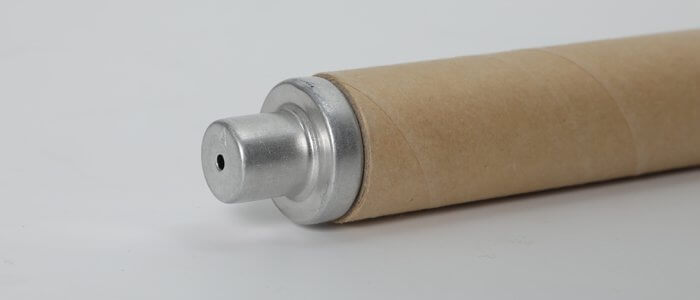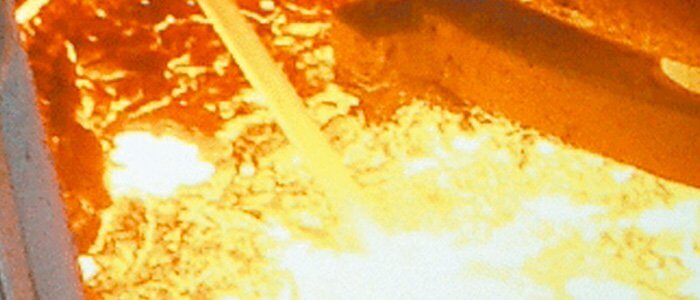Metallurgical sensors are essential tools in the field of materials science and metallurgy. They play a critical role in monitoring and controlling various parameters during the production and processing of metals and alloys. In this article, we will explore the different types of metallurgical sensors, their unique traits, and their wide-ranging applications.
Types of Metallurgical Sensors
Metallurgical sensors come in various types, each designed to measure specific parameters relevant to metallurgy. Here are some of the key types:
1. Temperature Sensors
– Characteristics: Temperature sensors are crucial for monitoring and controlling the temperature of furnaces, molten metal, and various heat treatment processes. They can measure a wide temperature range, from room temperature to extremely high temperatures.
– Applications: Temperature sensors find applications in steelmaking, casting, and heat treatment processes. They ensure that metals are processed within the specified temperature ranges to achieve desired properties.

2. Pressure Sensors
– Characteristics: Pressure sensors are used to measure the pressure of gases or liquids within metallurgical equipment. They can withstand high-pressure environments and provide real-time pressure readings.
– Applications: Pressure sensors are essential in processes such as gas atomization, where they help maintain the proper pressure conditions for producing fine metal powders.
3. Oxygen Sensors (Oxygen Probes)
– Characteristics: Oxygen sensors, often referred to as oxygen probes, measure the concentration of oxygen in gases or liquids. They are designed to withstand extreme temperatures and harsh environments.
– Applications: Oxygen probes are indispensable in steelmaking, where they monitor and control the oxygen content in molten steel. They help reduce impurities and improve the quality of the final steel product.

4. Composition Analyzers
– Characteristics: Composition analyzers determine the elemental composition of metals and alloys. They use various techniques such as X-ray fluorescence (XRF) and energy-dispersive X-ray spectroscopy (EDS) to provide accurate composition data.
– Applications: Composition analyzers are used in quality control and material characterization. They ensure that alloys meet specified composition requirements for strength, corrosion resistance, and other properties.
5. Thickness Sensors
– Characteristics: Thickness sensors measure the thickness of metal sheets or coatings. They are highly accurate and provide real-time thickness readings.
– Applications: Thickness sensors are used in industries like automotive manufacturing to ensure that metal components meet precise thickness specifications.
6. Level Sensors
– Characteristics: Level sensors monitor the level of liquid metals in crucibles or containers. They are designed to withstand high-temperature environments and provide continuous level monitoring.
– Applications: Level sensors are vital in foundries and metal casting processes, where they help prevent overflows or inadequate metal levels.
7. Strain Gauges
– Characteristics: Strain gauges measure the deformation or strain of metal structures. They are often used in materials testing to evaluate mechanical properties.
– Applications: Strain gauges play a crucial role in fatigue testing and quality control during the manufacturing of metal components.
8. Infrared Sensors
– Characteristics: Infrared sensors measure temperature by detecting the infrared radiation emitted by objects. They are non-contact sensors that can measure surface temperatures quickly.
– Applications: Infrared sensors are used in various metallurgical applications, including monitoring the temperature of rolling mill rolls and detecting hot spots in furnaces.
Applications of Metallurgical Sensors
Metallurgical sensors find applications across a wide range of industries and processes. Here are some notable examples:
1. Steelmaking
In the steel industry, temperature sensors and oxygen probes are critical for precise control of the steelmaking process. Temperature sensors ensure that the molten steel is maintained at the correct temperature for alloying and casting. Oxygen probes help reduce impurities in the steel by monitoring and controlling the oxygen content.

2. Foundries and Casting
Foundries rely on level sensors and temperature sensors to ensure proper metal levels and temperatures in crucibles and molds. These sensors help achieve consistent casting results and reduce defects.
3. Materials Testing
Strain gauges and composition analyzers are used extensively in materials testing laboratories. Strain gauges help researchers evaluate the mechanical properties of metals, while composition analyzers ensure the accuracy of test specimens.
4. Metal Coating and Plating
Thickness sensors are essential in industries that apply metal coatings or plating. They ensure that the coating thickness meets quality standards, providing corrosion protection and aesthetic appeal.
5. Powder Metallurgy
Pressure sensors are crucial in powder metallurgy processes, such as powder compaction and sintering. They help maintain the required pressure levels for producing dense and high-quality metal parts.
The Significance of Oxygen Probes
While all metallurgical sensors play vital roles, oxygen probes deserve special attention due to their critical role in steelmaking. These probes are instrumental in achieving the following:
– Reducing Impurities:
By continuously monitoring the oxygen content in molten steel, oxygen probes help control the addition of deoxidizing agents like aluminum or silicon. This results in reduced impurities and improved steel quality.
– Enhancing Alloying:
Oxygen probes assist in the precise addition of alloying elements, ensuring that the steel composition meets specific requirements. This is crucial for achieving the desired mechanical and chemical properties.
– Optimizing Energy Efficiency:
Oxygen probes contribute to energy efficiency by allowing for precise control of the oxygen and fuel injection rates in the furnace. This optimization reduces energy consumption and production costs.
– Minimizing Waste:
By preventing over-oxidation of steel, oxygen probes help minimize waste and improve yield in the steelmaking process.
– Reducing Carbon Emissions:
In addition to improving steel quality, oxygen probes play a role in reducing carbon emissions from steelmaking. By precisely controlling the oxygen levels in the furnace, the combustion process becomes more efficient. This not only conserves energy but also reduces the carbon footprint of steel production, aligning with global sustainability goals.
– Enhancing Process Safety:
Oxygen probes contribute to the safety of steelmaking operations. They help maintain the correct atmosphere within the furnace, reducing the risk of explosions or other safety incidents.
– Data Logging and Analysis:
Modern oxygen probes are equipped with data-logging capabilities, allowing for the collection of historical data. This data can be analyzed to identify trends and optimize processes over time, leading to continuous improvement in steel production.
Advancements in Metallurgical Sensors
As technology continues to advance, metallurgical sensors are becoming more sophisticated and integrated into automated control systems. Here are some notable advancements:
1. Wireless and Remote Monitoring
Wireless sensors are gaining popularity in metallurgy due to their convenience and flexibility. They enable remote monitoring of critical parameters, reducing the need for operators to be in close proximity to high-temperature and hazardous environments. This not only improves safety but also allows for real-time data analysis and rapid response to any deviations from desired conditions.
2. Integration with Industry 4.0
Metallurgical sensors are increasingly integrated into Industry 4.0 initiatives. These initiatives leverage the Internet of Things (IoT) and data analytics to create smart manufacturing environments. Sensors collect vast amounts of data, which can be analyzed in real-time to optimize processes, predict maintenance needs, and enhance overall operational efficiency.
3. Nanosensors
Nanosensors represent cutting-edge development in materials science and sensor technology. These ultra-small sensors can provide incredibly high-resolution measurements, making them ideal for detecting and monitoring microstructural changes in metals at the nanoscale. This level of precision is invaluable for research and development in metallurgy.
4. Artificial Intelligence (AI) and Machine Learning Integration
AI and machine learning algorithms are increasingly applied to sensor data in metallurgy. These technologies can identify complex patterns and correlations in sensor data that may be challenging for human operators to discern. This analytical capability enhances process control and quality assurance.
Applications Beyond Metallurgy
While metallurgical sensors are primarily associated with the steel industry, their applications extend beyond metallurgy. Here are a few examples:
1. Aerospace Industry
In the aerospace industry, temperature sensors and strain gauges are used to monitor the structural integrity of aircraft components. These sensors help ensure that materials maintain their strength and performance under extreme conditions.
2. Automotive Manufacturing
Thickness sensors are vital in automotive manufacturing, where they help maintain consistent thickness in sheet metal components. This is essential for ensuring the safety and durability of vehicles.
3. Electronics Manufacturing
In electronics manufacturing, composition analyzers are used to verify the purity and composition of materials used in semiconductors and electronic components. Ensuring the correct composition is critical for electronic performance.
4. Renewable Energy
Pressure sensors play a role in renewable energy applications, such as wind turbine manufacturing. They help ensure the integrity of materials in harsh outdoor environments.
Conclusion:
Metallurgical sensors are the unsung heroes of the materials science and manufacturing world. From monitoring temperature and oxygen levels in steelmaking to ensuring the thickness of automotive components, these sensors underpin the quality and performance of countless products and industries.
As technology continues to advance, metallurgical sensors will continue to evolve, becoming even more integral to the industries they serve. Their role in enhancing efficiency, ensuring safety, reducing environmental impact, and driving innovation in metallurgy and beyond cannot be overstated. The future promises even greater integration, precision, and intelligence in the realm of metallurgical sensors, contributing to the advancement of materials science and manufacturing as a whole.


